Rhyme is a critical phonological awareness skill in which children learn at a very young age. The ability to rhyme will help children form a strong reading and spelling foundation.
Rhyme is the First Skill Domain in Phonology
Download this freebie which overviews all phonological and phonemic awareness skills. This will be a great way to plan out your lessons.
In this blogging series, I will discuss each of the skills seen in the freebie below.
Two Parts to Rhyme
- Rhyme Identification
Children need to have repeated exposure to rhyme, they need to hear it read to them in stories, poems, finger plays, nursery rhymes, tongue twisters, riddles, and songs. This of course starts when they are babies, but is equally as important in the first formal years of schooling. Begin with aural (listening) language before written, then later you will integrate listening and viewing texts.
From here, students must be given opportunities to identify rhyme in aural language. As you read, or sing to young children demonstrate how you fill in the rhyming word(s), by pausing. Then after this, orally extend the rhyme with new words. The words can also be nonsense words too!
The next step is to then invite children to identify rhyme in written texts. Using the same medium as above, ask children to identify any rhyming words they can read.
2. Rhyme Construction
Constructing rhyme is the next phonological awareness skill in the continuum. Children can work on orally playing with rhyme. Young children usually 4 and up begin to orally play with rhyming words.
Using books, songs, poems, tongue twisters and riddles, invite children to fill in the blanks when you omit words from favorite books. Then from there, ask students to supply more rhyming words.
When I taught kindergarten, I would use hand signals to promote the concept of rhyme. For example, if we notice two words like cat and mat rhymed, I would say, “cat and mat rhyme, they sound the same at the end.” Then move my hand from the center of my body, to the outside, turning my palm up, as I go, and as I say the word cat, then do the same with the other hand, as I said mat. Then of course, the children pick that up, and mirror the movement. You don’t have to do this, but I found my students understood concepts with an action to illustrate it.
Activities to Play Daily or Weekly
Rhyme Identification
- Read out action songs, or finger plays and after the second or third sing through, insert a word in place of the rhyming word. Wait for a response! For example:
One potato, two potato,
Three potato, four,
Five potato, six potato,
Seven potato, more rabbit!
2. Write a selection of rhyming and non-rhyming word pairs on the board or large paper for the class to see.
For example; chair/share, red/sun, rice/mice, rag/lag, hair/mare, run/ran
Read the pairs together and ask the children if the words rhyme. Ask them how they can tell.
Promote the notion that rhyming words sound the same at the end but don’t always look the same. You could even make an anchor chart to reinforce this as this can be a difficult concept for visual learners to grasp.
Rhyme Construction
- Play a game of ‘I Spy Rhyme’. It’s just like I spy but with a rhyme twist! The person who is it would say, “I spy something that rhymes with hawk.” The answer being; chalk. Once children get that they have to rhyme it out before they say it, it is so much fun!
2. Read nursery rhymes each day and make a list of the rhyming words. Make an extended list of rhyming words for each set of rhyming words.
Consistency is the Key
No matter what you do to teach this important phonological awareness skill, be sure to visit it regularly with your students.
Before children move on to those matching rhyme games and activities, be sure that you give them daily opportunities (especailly in Pre-K, Kindergarten and first grade) to hear, identify, and construct rhyme.
Free Teacher-Led Pages to Work on Identifying and Constructing Rhyme with Children
Here is a freebie which you can use each day beginning with identifying rhyme, and then move onto constructing rhyme.
Click any of the images to download the file for free.
If you’re looking to phonological and phonemic awareness assessments and interventions, this ready resource has it all.
In this blogging series, I will discuss each of the skills seen in the phonological and phonemic awareness cheat sheet seen at the top of the page. Be sure to sign up, to read more about how you can help build stronger readers.
Join the word work newsletter

Subscribe to get word work ideas. Plus download your FREE Vowel Chart now.
Happy word work!
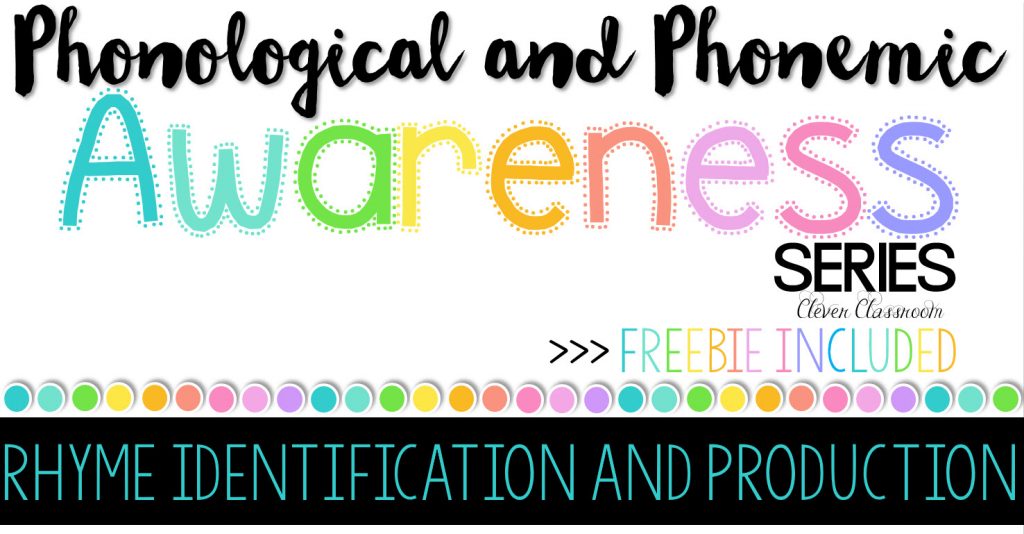
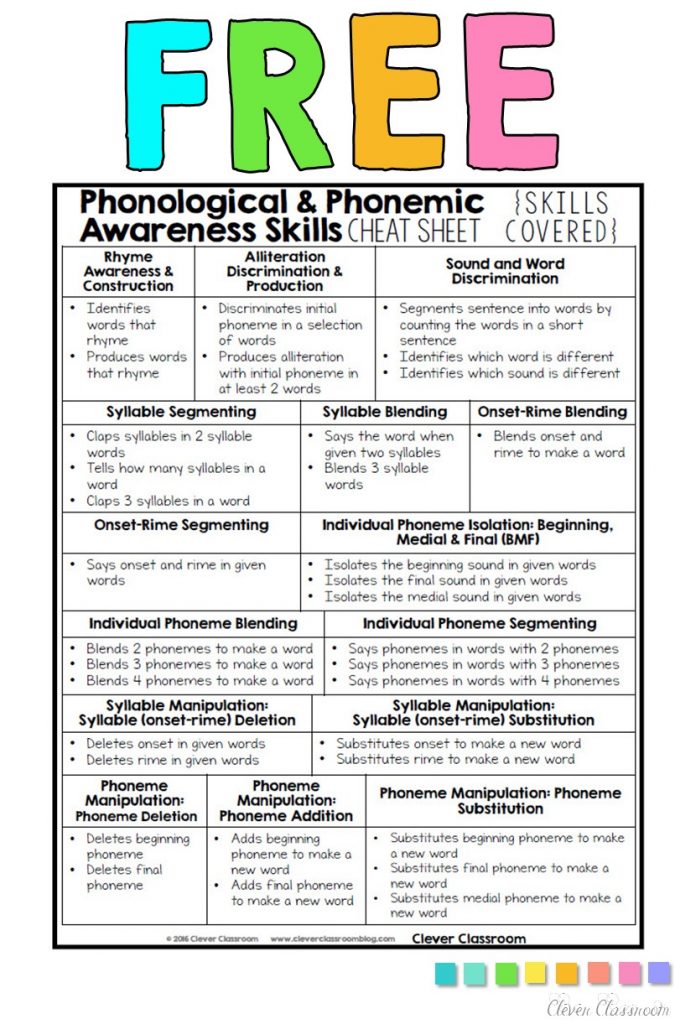
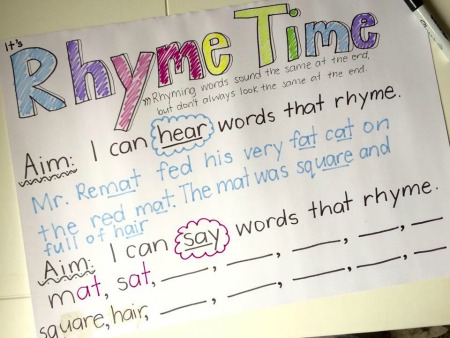
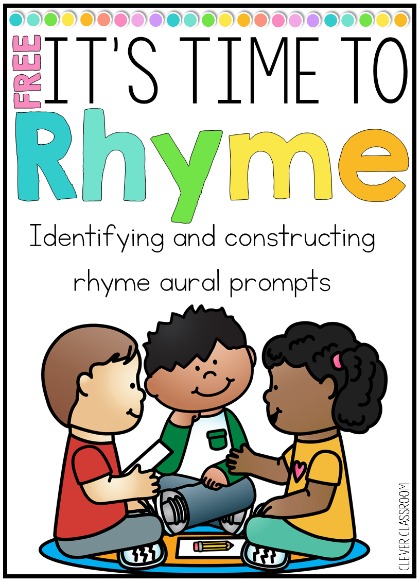
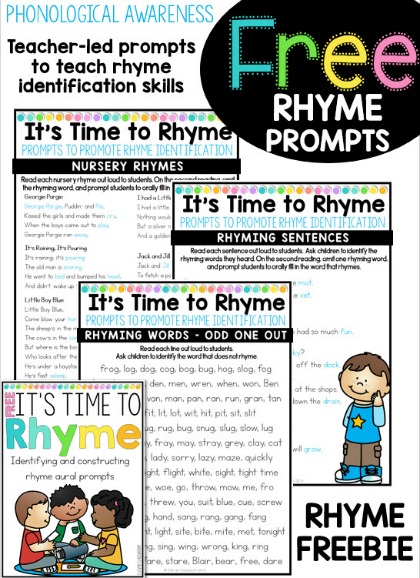
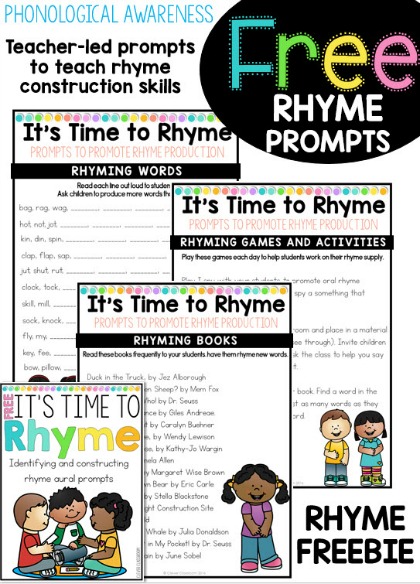


Leave a Reply
You must be logged in to post a comment.